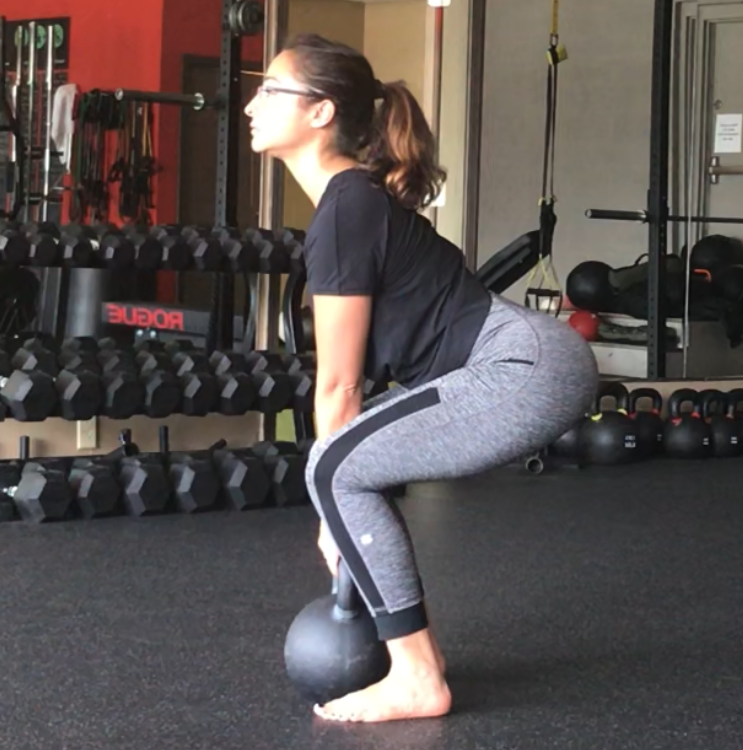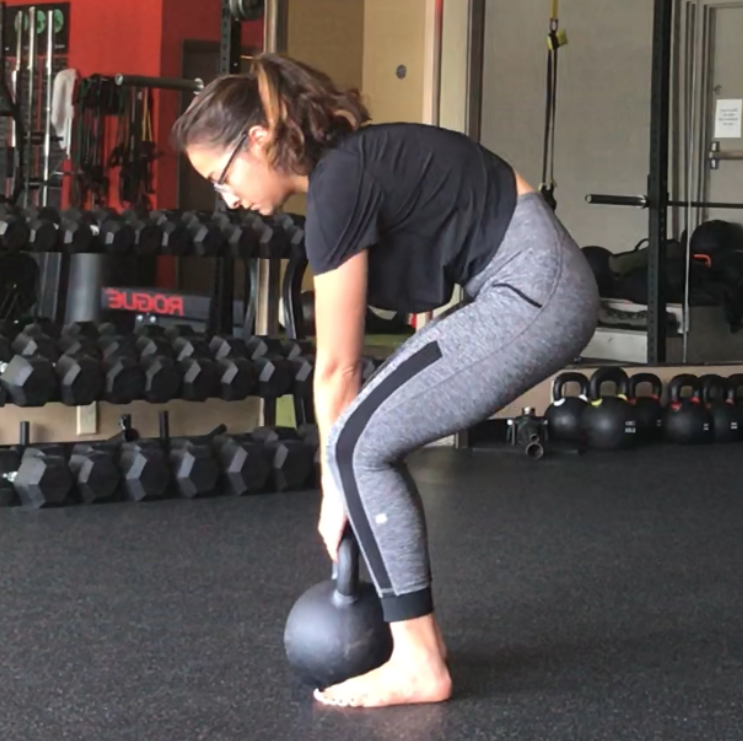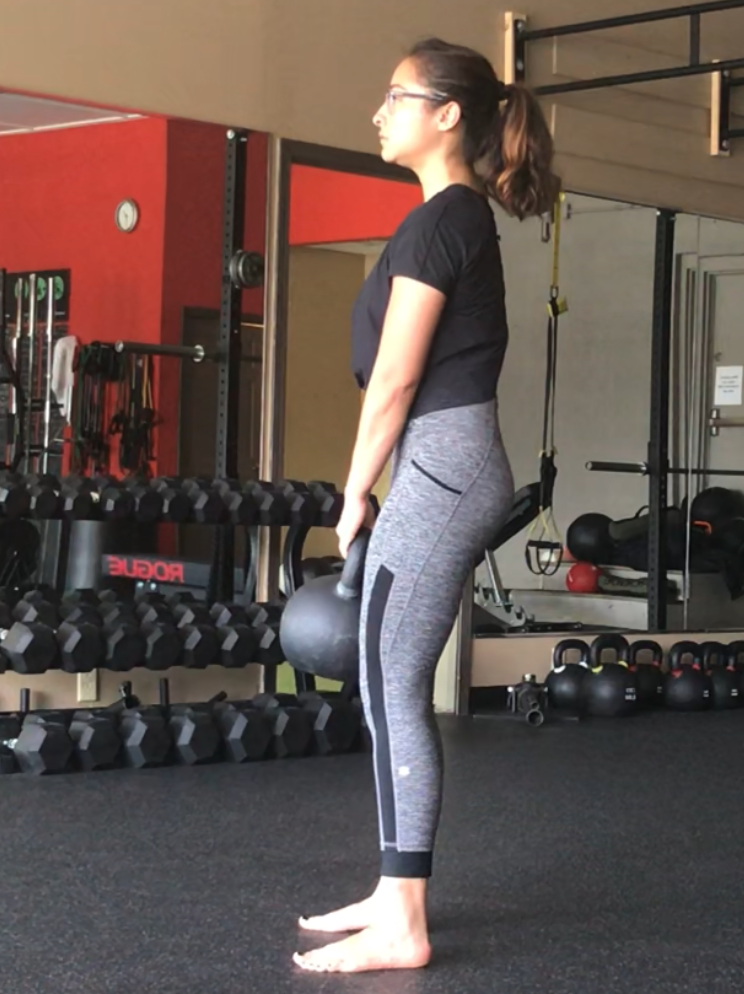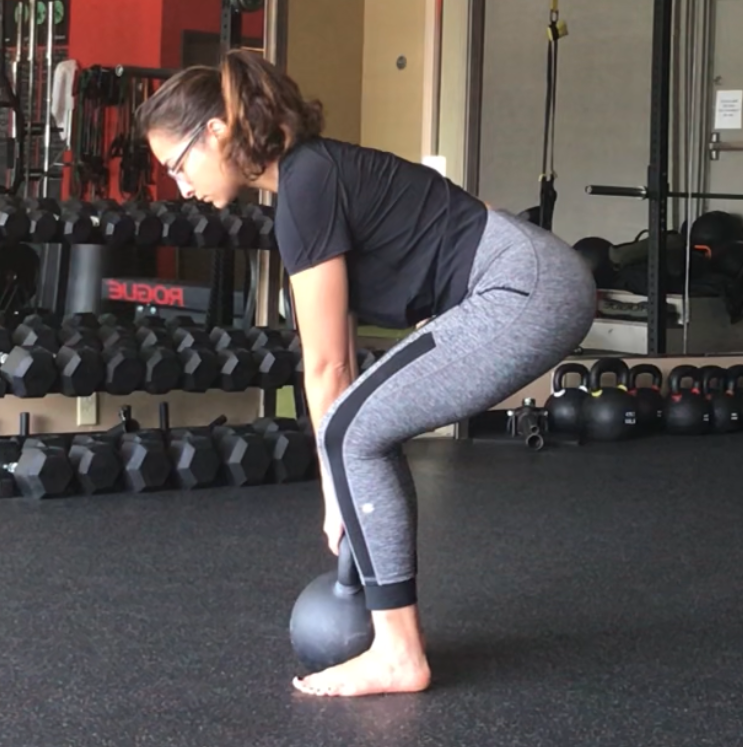Holding Off on Deadlifts
When I introduce a new movement/lift to a client, I don’t have time for them to struggle with it because I work with multiple people at once. I try to pick exercises that they will be able to do with confidence and little to no coaching.
In a semi-private setting, I have other people waiting for my coaching, which leaves me with less than a minute to show someone a new activity.

Because I don’t work in a private setting, I tend to hold off on deadlifts for the 1st month or so.
To give you more context: We train people who have never trained before (bad at taking cues), people who might fear to lift weights at first, and people in persistent pain who are very deconditioned (my target market).
Deadlifts are hard to get right.
If they don’t tuck enough, they’ll arch their back, if they tuck too much they’ll round. If they’ve never lifted before, they don’t know how to create tension in their abdominal area. They don’t know what it’s like to push their feet through the floor…the list of problems can go on and on.
Plus, the word “dead” is in deadlift.
There have been many instances during a consult or introductory session a new client will witness one of our current clients lifting heavy trap bars off the ground, and they tell me something along the lines of “I never want to do that!!!”
With these people, you run the chance of them feeling confused, threated and non-confident when you try to introduce a weighted hinge within the first few sessions. If they build a bad taste about deadlifts from the beginning, they’ll progress way slower than they’re capable of. And the goal is always steady progression.
This is especially true with persistent pain clients. They feel their low back during a deadlift and they’ve had back pain for 10 years. Their brain is on high alert. If they flare up the day after their first time trying it, good luck getting them comfortable progressing with that lift.
I want to remind you: Context Context Context! Of course, not everyone is like this. Last month we had a brand-new client start with us and within one month, she was deadlifting, squatting, and doing kettlebell swings.
If someone comes in with a small lifting background and not scared of weights and they take cues well, we introduce things way sooner.
But since most people don’t take cues well, we train multiple people at once, work with those who are scared, or ones who are super deconditioned, I save myself the struggle and hold off on hinging until I think they’re ready to handle all the instructions to do one correctly.
That sets ME up for success, but most importantly, it sets the client up for success.
How do I know they’re ready?
Glad you asked ?
Think of this as giving your clients the ingredients for a deadlift so when the time comes, it takes minimal to zero coaching.
1) Restoring Motion at the Hip and Thorax During the Initial Month
In order for your client to execute a good-looking deadlift, certain motions at the hip and thorax are required. People who lack certain motions will struggle from keeping their deadlift looking like a banana or their inability to sit back and only round the shit out of their spine.

All of those positions above are undesirable.
Instead of thinking it’s your inability to coach it correctly, or your client’s ability to understand what you want them to accomplish, It might be that they don’t have access to the motions you’re wanting them to perform.
To free up your client’s movement, here are my top few moves that I will go into deeper detail explaining the “WHY” behind them over the next few weeks.
For now, practice coaching them. We’ll dive deeper later on 😉
These exercises are great for warm-ups and homework for the clients that like do thing things at home. (yes, those clients do exist).
Once you go through these activities, you’ll notice the cues are very similar. Exhale, reach, and tuck.
But what if someone seems like they need to do the opposite? What if someone is super rounded on the deadlift??
You want to keep in mind, you can’t use your eyes to assess what the client needs when deadlifting. Take Carden for example. It looks like he needs to extend and get his chest to the KB. Carden has deadlifted a little over handful of times.
Carden went through 90/90 Bridge and Elevated Bench Rockback (shared above)
Can you see a small difference? on the left from the first video he seemed to round a little too much. Second he was able to sink back into his hips more and round less through his low back. Nothing to write home about, but it’s a good change!

Here’s a video of a simple way I explain to students on why they can’t use their eyes to assess what a client needs:
2) Being Able to Push Through the Floor
I got a lot of cues by my employers when I first started out. One of those cues when coaching a squat or deadlift was “Push your feet through the floor”.
Since clients had no problem telling me when I didn’t make sense, I would always get the confused look and a “I have no idea what you mean by that” when I’d cue it.
Because of that, I started introducing that concept early on in someone’s training when we’re doing basic activities on the ground. It seems to help them understand what I mean by “pushing yourself through the floor”, which is a great thing to think about when you’re starting to lift heavier weight off the ground.
Glute bridge hold is a good exercise to start introducing that concept:
3) Create Tension in a “neutral” Position
I hate this term because most people say good posture = having a neutral spine. I’ve gotten away from that thought process, but I still think it’s important for clients to be able to lift with not arching too much and by not rounding too much, and I can’t think of a simpler term to use than “neutral looking spine”.
Which I know there’s no such thing as neutral, you don’t have to write that in the comments (yes, talking to you, Zac), but can we all agree that you don’t want deadlifts looking like this….

Or like this….

And we want them more like this….

Plus, if you share clients with someone, don’t you want to have somewhat of an agreement of what a good deadlift looks like. We all have to come up with our own standards, and my standards are:
A deadlift needs to look somewhat like this:
Where they’re maintaining a “neutral looking spine” throughout the entire lift.
Top position

Transition:

Bottom:

You and I both know people struggle with this. They’re not aware of their body and to ask them to keep their trunk looking like this as they’re focusing on 5 different things at once. Pushing hips back, keep whole foot contact, not shrugging, keeping head with spine, knees slightly bent…you’re asking for a lot.
That’s why, by the time I teach someone how to deadlift, exhaling, tensing up their “core”, has already been ingrained in their movement skillset and close to second nature.
Here are a few activities that can be put in someone’s program prior to deadlifts:
Tall and Half Kneeling Band Pull-over breathing are GREAT ways to teach someone an optimal position:
Here are a few other ways you can teach your clients to create tension:
4) Confidence in Your Ability to Keep Them Safe
If I have a client who was super scared to lift and it’s been 4-8 weeks and I haven’t hurt them yet. Chances are, they trust me. Their trust means a lot when I tell them they’re capable of lifting that 50lb KB off the ground.
If they trust me, they too will believe they can pick up the 50lbs KB off the ground.
Trust will be a long way with persistent pain.
A few years ago I worked with a lady that would “hurt” herself each time she didn’t train with me. To the point where she cried if I wasn’t there. Since I knew nothing about pain at the time, I thought my colleges and employer were not paying attention and let her do things wrong. Now I think she trusted me so much, that if I was watching her, she thought she was doing it right. Which isn’t a good thing for a client to develop a dependency on you like that, but it does go to show how much trust plays into a client’s ability to do something.
Wait….so what about squats???
I don’t deadlift people right away but I will squat people on day 1 or 2.
Squats are easy because you can start with an ISO squat hold, which makes it easy to coach. Plus, if a client over tucks a little bit, I’m cool with it. With deadlifts, I don’t want people rounding too much.
Here are a few variations I start people with:
(I don’t cue hands together anymore)
If someone nails these down, adding movement to the lift is a piece of cake 🙂
A strong squat will also prepare someone for a successful deadlift when you decide it’s the right time to introduce it.
I hope all of that was helpful. Will be diving deeper into movement and whats required for your clients to move well over the following weeks 🙂
Until next time!
Lucy
